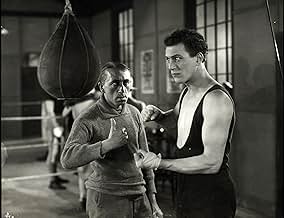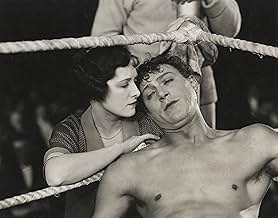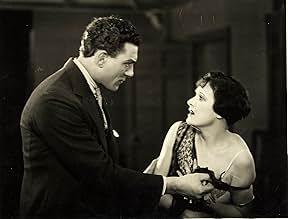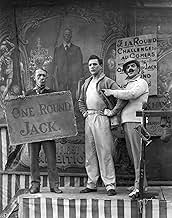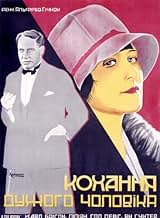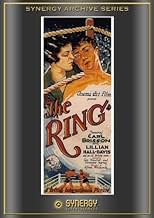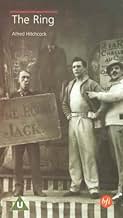IMDb रेटिंग
6.1/10
4.2 हज़ार
आपकी रेटिंग
अपनी भाषा में प्लॉट जोड़ेंTwo boxers compete for the love of a woman.Two boxers compete for the love of a woman.Two boxers compete for the love of a woman.
- निर्देशक
- लेखक
- स्टार
Lillian Hall-Davis
- The Girl
- (as Lilian Hall Davis)
Eugene Corri
- Eugene Corri
- (बिना क्रेडिट के)
Charles Farrell
- Second
- (बिना क्रेडिट के)
Clare Greet
- Fortune Teller
- (बिना क्रेडिट के)
Lawrence Hanray
- Clerrgyman in Black Cassock
- (बिना क्रेडिट के)
Tom Helmore
- Spectator
- (बिना क्रेडिट के)
Alfred Hitchcock
- Man-Dipping Attraction Worker
- (बिना क्रेडिट के)
Minnie Rayner
- Boxing Contestant's Wife
- (बिना क्रेडिट के)
Brandy Walker
- Spectator
- (बिना क्रेडिट के)
Bombardier Billy Wells
- Boxer
- (बिना क्रेडिट के)
फ़ीचर्ड समीक्षाएं
I really wanted to like this one, even watching it twice in the past week, thinking that it might grow on me (as Hitchcock's Number Seventeen has done, slightly) but it just doesn't do anything for me. Apparently, it didn't do much for the audiences in 1927 either, because from what I've been able to find out about it, despite being popular with critics, it sank at the box office.
Hitchcock not only directed but also wrote this boring melodrama, a combination of two of my least favourite genres: boxing, and romance. The world of boxing provides the backdrop for this formulaic triangle between two competitors and the girl who loves them both: but which man does she really want to marry?
The title is good, with several layered meanings in relation to the story. The fact that the film used few title cards was unique, letting visuals tell the story by themselves. There are a lot of clever visuals by Hitchcock: as we look up through the water of a pond at the two lovers; placing the ring on her finger at the marriage ceremony, only to have the bracelet slip down to her wrist, reminding her (and the audience) of the other man; girl, sitting on hubby's lap, glances across the room toward a mirror, and sees reflection of the "other man"; fingers flittering away on the ivories, distorted - but the plot, again written by Hitchcock himself, was a routine melodrama which could hardly hold my attention.
Beautiful, slightly Gothic looking church in which the ceremony occurs is an asset to the film in its few, brief scenes. Goofball comically blowing the suds off the beer, then downing it, and the film's subsequent distorted Point-Of-View shot is an amusing moment. Was this film, released October 1927, the first to use POV shots?
Hitchcock not only directed but also wrote this boring melodrama, a combination of two of my least favourite genres: boxing, and romance. The world of boxing provides the backdrop for this formulaic triangle between two competitors and the girl who loves them both: but which man does she really want to marry?
The title is good, with several layered meanings in relation to the story. The fact that the film used few title cards was unique, letting visuals tell the story by themselves. There are a lot of clever visuals by Hitchcock: as we look up through the water of a pond at the two lovers; placing the ring on her finger at the marriage ceremony, only to have the bracelet slip down to her wrist, reminding her (and the audience) of the other man; girl, sitting on hubby's lap, glances across the room toward a mirror, and sees reflection of the "other man"; fingers flittering away on the ivories, distorted - but the plot, again written by Hitchcock himself, was a routine melodrama which could hardly hold my attention.
Beautiful, slightly Gothic looking church in which the ceremony occurs is an asset to the film in its few, brief scenes. Goofball comically blowing the suds off the beer, then downing it, and the film's subsequent distorted Point-Of-View shot is an amusing moment. Was this film, released October 1927, the first to use POV shots?
"The Ring" is, for me, Hitchcock's best silent feature. It is a nippy little romance which sprints along with a surprisingly swift pace.
There's the typical early Hitch experimentation - the camera getting "knocked out" in a boxing scene is a prime example and some fine comedic moments in what is otherwise a pretty serious story of love and betrayal although, with the boxing backdrop, the rather mundane story is slightly more exciting.
Less gimicky than the more famous "The Lodger", and therefore more believable, "The Ring" is an underrated, early effort from the man who went on to become one of the most celebrated directors in the world.
NB. Catch hold of the BFI release of this video if you can - the score is superb and by far the best new music I have heard composed for a silent movie.
There's the typical early Hitch experimentation - the camera getting "knocked out" in a boxing scene is a prime example and some fine comedic moments in what is otherwise a pretty serious story of love and betrayal although, with the boxing backdrop, the rather mundane story is slightly more exciting.
Less gimicky than the more famous "The Lodger", and therefore more believable, "The Ring" is an underrated, early effort from the man who went on to become one of the most celebrated directors in the world.
NB. Catch hold of the BFI release of this video if you can - the score is superb and by far the best new music I have heard composed for a silent movie.
The Ring was made from the only screenplay Hitchcock wrote himself and it deals, as many of his earliest pictures do, with a love triangle. At first glance, it looks like a more cynical update of the infidelity-themed morality comedies of Cecil B. De Mille, but more than that it is the first really competent Hitchcock picture. Even if he was not yet using the ideas and motifs of suspenseful thrillers, he was at least developing the tools with which to create suspense.
As well as being a student of the German Expressionist style, the rhythmic editing style of Sergei Eisenstein had had its impact upon Hitchcock. But here he keeps tempo not just with the edits but with the content of the imagery. This is apparent from the opening shots, where spinning fairground rides brilliantly establish a smooth tempo. And like Eisenstein, the editing style seems to suggest sound for example when a split-second shot of the bell being rung is flashed in, we almost subconsciously hear the sound because the image is so jarring.
There is also a contrast, particularly with silent films from the US, in that The Ring is not cluttered up with too many title cards. As much as possible is conveyed by imagery, and Hitch has enough faith in the audience to either lip-read or at least infer the meaning of the bulk of the characters' speech. And it's not done by contrived symbolism or overacting, it's all done by getting the right angles and the right timing, particularly with point-of-view shots, as well as some strong yet subtle performances. There are unfortunately a few too many obvious expressionist devices (particularly double exposures), many of which were unnecessary, but there is far less of this than there is in The Lodger.
Let's make a few honourable mentions for the aforementioned actors. First up, the stunningly handsome and very talented Carl Brisson in the lead role. In spite of his talent I was at first a bit confused as to why he got the role, as to be honest he looks more like a ballet dancer than a pugilist! But that just goes to show how much I know, as it turns out Brisson was in fact a former professional boxer and inexperienced in acting. Playing his rival is the competent Ian Hunter, who would go on to have a lengthy career in supporting roles right up to the 60s. The most demanding role in The Ring has to be that given to Lillian Hall-Davis, torn between two lovers. She pulls it off very well however with an emotive, understated performance, and it's a shame her career never lasted in the sound era. And last but not least the great Gordon Harker provides some comic relief in what is probably his best ever role.
The Ring's climactic fight scene is among the most impressive moments of silent-era Hitchcock. Martin Scorcese may have had his eye on The Ring when he directed the fight scenes in Raging Bull, as his watchword for these scenes was "Stay inside the ring". The fight in The Ring starts off with some fairly regular long shots, but when the action intensifies Hitchcock drops us right in the middle of it, with close-ups and point-of-view shots. Hitchcock's aim always seems to have been to involve his audience, and this was crucial in his later career where the secret of his success was often in immersing the viewer in the character's fear or paranoia.
The Ring really deserves more recognition than the inferior but better known The Lodger. It's a much more polished and professional work than the earlier picture, and probably the best of all his silent features.
As well as being a student of the German Expressionist style, the rhythmic editing style of Sergei Eisenstein had had its impact upon Hitchcock. But here he keeps tempo not just with the edits but with the content of the imagery. This is apparent from the opening shots, where spinning fairground rides brilliantly establish a smooth tempo. And like Eisenstein, the editing style seems to suggest sound for example when a split-second shot of the bell being rung is flashed in, we almost subconsciously hear the sound because the image is so jarring.
There is also a contrast, particularly with silent films from the US, in that The Ring is not cluttered up with too many title cards. As much as possible is conveyed by imagery, and Hitch has enough faith in the audience to either lip-read or at least infer the meaning of the bulk of the characters' speech. And it's not done by contrived symbolism or overacting, it's all done by getting the right angles and the right timing, particularly with point-of-view shots, as well as some strong yet subtle performances. There are unfortunately a few too many obvious expressionist devices (particularly double exposures), many of which were unnecessary, but there is far less of this than there is in The Lodger.
Let's make a few honourable mentions for the aforementioned actors. First up, the stunningly handsome and very talented Carl Brisson in the lead role. In spite of his talent I was at first a bit confused as to why he got the role, as to be honest he looks more like a ballet dancer than a pugilist! But that just goes to show how much I know, as it turns out Brisson was in fact a former professional boxer and inexperienced in acting. Playing his rival is the competent Ian Hunter, who would go on to have a lengthy career in supporting roles right up to the 60s. The most demanding role in The Ring has to be that given to Lillian Hall-Davis, torn between two lovers. She pulls it off very well however with an emotive, understated performance, and it's a shame her career never lasted in the sound era. And last but not least the great Gordon Harker provides some comic relief in what is probably his best ever role.
The Ring's climactic fight scene is among the most impressive moments of silent-era Hitchcock. Martin Scorcese may have had his eye on The Ring when he directed the fight scenes in Raging Bull, as his watchword for these scenes was "Stay inside the ring". The fight in The Ring starts off with some fairly regular long shots, but when the action intensifies Hitchcock drops us right in the middle of it, with close-ups and point-of-view shots. Hitchcock's aim always seems to have been to involve his audience, and this was crucial in his later career where the secret of his success was often in immersing the viewer in the character's fear or paranoia.
The Ring really deserves more recognition than the inferior but better known The Lodger. It's a much more polished and professional work than the earlier picture, and probably the best of all his silent features.
The symbolic use of objects, form editing, the position of characters in the scene... these were all used with such joyous abandon by Hitchcock that you can really see what a fertile genius he had. The way the wife moves from one corner of the ring to the other as the fight progresses, the editing when the wedding ring is placed on her finger... while these may seem a bit obvious by todays standards, in the silent era they spoke volumes about the story without a word being spoken. Even the title has a least four meanings that I can see; the boxing ring, the wedding ring, the bracelet the lover buys, and the love triangle at the heart of the story.
This early film has its flaws-- a predictable plot and some overlong scenes of dubious relevance-- but it already clearly demonstrates Hitchcock's mastery of editing and the use of powerful images. It's also among the most expressionist of his films stylistically; note, for examples, the weird distortions he uses during the party sequence and the frequent echoes of both title and plot in the imagery.
Its core, though, remains the final match, which is still among the more exciting examples of cinematic boxing. Even though you know that the hero has to win, it becomes quite believable that he will lose, and the movement of his wife from the champion's corner to his, motivating the final plot pay-off, is very well entwined with the progress of the match. The inserts of the stopwatch do exactly what they should; you can almost hear the ticking (even though this is a silent film, the visuals often have a surprisingly auditory feel to them). The pacing becomes astonishingly rapid, and the viewer gets sucked into the excitement and brutality of both the match and the sexual jealousy which underlies it.
The only DVD release with which I am familiar is that of Laserlight, a public domain company. As with each Hitchcock silent they've released, they've attached various musical selections, mostly orchestral, to the action. The sound editing is frequently sloppy, and the sound quality varies widely, but some genuine care seems to have gone into most of the actual choices, and the music accompanying the final match works extremely well; it is unlikely that this sequence will ever be better accompanied than it is here.
This is a much more impressive film than its present obscurity would suggest. It deserves an honorable place in both the Hitchcock canon and the slender list of worthwhile boxing films.
Its core, though, remains the final match, which is still among the more exciting examples of cinematic boxing. Even though you know that the hero has to win, it becomes quite believable that he will lose, and the movement of his wife from the champion's corner to his, motivating the final plot pay-off, is very well entwined with the progress of the match. The inserts of the stopwatch do exactly what they should; you can almost hear the ticking (even though this is a silent film, the visuals often have a surprisingly auditory feel to them). The pacing becomes astonishingly rapid, and the viewer gets sucked into the excitement and brutality of both the match and the sexual jealousy which underlies it.
The only DVD release with which I am familiar is that of Laserlight, a public domain company. As with each Hitchcock silent they've released, they've attached various musical selections, mostly orchestral, to the action. The sound editing is frequently sloppy, and the sound quality varies widely, but some genuine care seems to have gone into most of the actual choices, and the music accompanying the final match works extremely well; it is unlikely that this sequence will ever be better accompanied than it is here.
This is a much more impressive film than its present obscurity would suggest. It deserves an honorable place in both the Hitchcock canon and the slender list of worthwhile boxing films.
क्या आपको पता है
- ट्रिवियाAccording to the dialogue card at 1:19:06, the big fight between Jack Saunders and Bob Corby was refereed by Eugene Corri, who entered the ring wearing a tux. Corri made boxing history in December 1907 by being the first referee to referee inside the ring during a fight.
- गूफ़During the first boxing scene, when the assistant is helping the sailor put on his coat, the coat is on nearly all the way; then, in the next shot, it is shown being put back on again.
- भाव
The Promoter: If you win this next fight with the nigger, you'll be in the running for the championship.
- कनेक्शनFeatured in Silent Britain (2006)
टॉप पसंद
रेटिंग देने के लिए साइन-इन करें और वैयक्तिकृत सुझावों के लिए वॉचलिस्ट करें
- How long is The Ring?Alexa द्वारा संचालित
विवरण
- रिलीज़ की तारीख़
- कंट्री ऑफ़ ओरिजिन
- भाषा
- इस रूप में भी जाना जाता है
- Cuadrilátero
- फ़िल्माने की जगहें
- उत्पादन कंपनी
- IMDbPro पर और कंपनी क्रेडिट देखें
- चलने की अवधि1 घंटा 56 मिनट
- ध्वनि मिश्रण
- पक्ष अनुपात
- 1.33 : 1
इस पेज में योगदान दें
किसी बदलाव का सुझाव दें या अनुपलब्ध कॉन्टेंट जोड़ें


